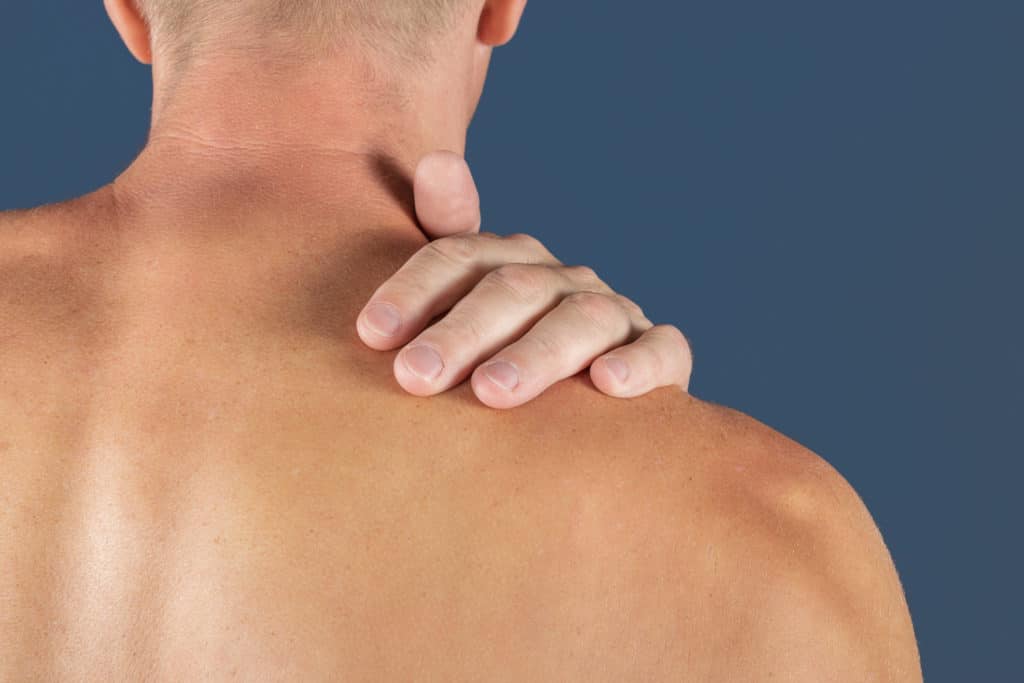The shoulder is one of the most flexible joints in the body, arcing in numerous ways to complete necessary motions such as lifting your arm overhead. Because of the wide range of motion in the shoulder joint, this part of the body is susceptible to injury and instability.
The general path of care for shoulder pain is to attempt to reduce inflammation and rehabilitate the joint using non-surgical therapies. However, in certain instances, surgical repair or joint replacement is necessary. Postponing surgery could allow the injury to worsen, making it more difficult to treat at a later time. If shoulder pain is severe or persistent, a complete medical evaluation should be obtained.
Call our skilled medical team today at (928) 537-4375 for a personalized shoulder surgery appointment at one of our many facilities throughout Arizona!
What is shoulder surgery?
Several surgical procedures have been developed to address various shoulder injuries. Surgery may address issues such as instability, fractures, tears, and other conditions that are limiting the range of motion of this joint. As often as possible, surgeons prefer minimally-invasive techniques such as arthroscopic surgery to repair the structures within the shoulder. During the appointment for care, the type of surgery that is necessary is discussed and explained in detail to ensure patients feel confident with their treatment plan.
Am I a candidate for shoulder surgery?
Patients who have suffered a significant shoulder injury or whose shoulder pain has not resolved with conventional methods such as medication and physical therapy may be good candidates for shoulder surgery.
Shoulder procedures can treat injuries and conditions including:
- Arthritis
- Fracture
- Labral tear or SLAP tear of the labrum
- Shoulder instability or limited mobility such as “frozen shoulder”
- Tendonitis or tear of the rotator cuff
- Bone spurs

Types of Shoulder Surgery
Common shoulder procedures include:
- Rotator Cuff Repair
- Arthroscopic Debridement
- Shoulder Stabilization
- Shoulder Replacement
Rotator Cuff Pain
Rotator cuff pain is most commonly caused by an inflamed tendon (tendinitis) or torn tendon. This pain may range from a dull, aching sensation to sharp pain that moves down the upper arm when reaching overhead or sleeping on the affected side. Sharp or aching pain and swelling from a rotator cuff or tear are usually located over the front or lateral part of the shoulder and upper arm. The rotator cuff consists of four muscles which are the supraspinatus, infraspinatus, teres minor, and subscapularis; Issues with any of these can cause rotator cuff pain.
Rotator Cuff Repair
The rotator cuff is a tendon that attaches muscles to the uppermost part of the arm bone. It is the part of the shoulder that keeps the ball of the arm bone firmly within the socket of the shoulder. An injury to the rotator cuff may allow the head of the arm bone to come into contact with the top of the shoulder, causing nerve impingement. Rotator cuff repair is often performed arthroscopically through small incisions.
Arthroscopic Debridement
Chronic shoulder pain that does not improve with medication, injections, and physical therapy may need debridement, or “cleaning out.” Performed as an arthroscopic procedure, debridement removes bone spurs, scar tissue, and inflamed tissue that may be pressing on nerves or healthy tissue.
Shoulder Stabilization
The wide range of motions performed by the shoulder could lead to instability in the joint. An unstable joint is susceptible to dislocation and a labral tear. The shoulder may be stabilized using an arthroscopic technique. Through small incisions, anchors are placed into the bone of the shoulder socket. A thread is then attached and looped around the joint to hold the labrum in place, allowing it to heal.
Shoulder Replacement
Shoulder replacement surgery may be performed to address the effects of osteoarthritis. This is a “wear and tear” type of condition in which the cartilage in the shoulder joint degrades over time. The deterioration of cartilage can cause flaps of tissue to become stuck during physical movement, causing pain. Shoulder replacement may focus on only one part of the shoulder joint, such as the ball joint, or it may replace the entire ball and socket of the joint with metal and plastic structures that replicate natural anatomy.
Preparing for Shoulder Surgery
A comprehensive medical exam is conducted before surgery. This clearance exam occurs several weeks before the date of the surgical procedure and may include a chest x-ray, EKG, and other tests and bloodwork.
The surgeon may also instruct a patient to stop taking certain medications such as those that thin the blood. It is crucial that you discuss all the medications you are taking with your surgeon during your initial appointment. Some medications may need to be switched or stopped altogether until either the day of surgery or thereafter. Over-the-counter medications and supplements also need to be reported to the surgeon in order to prevent adverse interaction with medications prescribed after surgery.
What to Expect During Shoulder Surgery
Some shoulder surgeries are performed with regional anesthesia and sedation and others are performed under general anesthesia. Your surgeon will discuss this aspect of your surgery with you during your appointment. Most often, arthroscopic procedures are performed with regional anesthesia and sedation. The patient is sedated before the nerve block is performed to ensure comfort. Another term used to describe regional anesthesia is a nerve block with local numbing medication injected around the nerves of the shoulder. This type of anesthesia is facilitated by ultrasound to ensure the proper location of the block.
Whether with sedation or general anesthesia, patients rest comfortably during their shoulder surgery. They wake in the recovery room and may be released to go home after the effects of the anesthesia have decreased.
Recovery After Shoulder Surgery
Currently, it is common practice to “sling” the arm after surgery to minimize the range of motion. The sling may be worn for as little as two weeks or up to six weeks, depending on the type and extent of surgery that is performed.
Patients are instructed to take prescription pain medication as directed to manage comfort. Transition to over-the-counter medications occurs over time as the joint heals and post-surgical pain decreases.

Physical therapy is an integral aspect of recovery that may begin at different points based on the type of surgery a person has had. A full recovery also occurs in relation to the severity of the initial injury and the extent of surgery that was performed. Every person also has a unique healing capacity that will affect their recovery time. Typically, the more extensive injuries, such as rotator cuff tears, heal over the course of four to six months.
Your surgical team will discuss the details of recovery with you during your appointment for shoulder surgery.
Possible Complications with Shoulder Surgery
The common side effects of shoulder surgery include stiffness, tenderness, and mild to moderate pain. Signs of surgical complications such as infection include:
- Fever that develops two or more days after surgery
- Excessive bleeding or fluid drainage
- Increased swelling or pain
- Tingling or numbness in the arm or hand
- Redness and warmth localized in the shoulder area
Call Summit Healthcare For Your Shoulder Surgery Appointment!
For more information regarding shoulder surgery or to schedule an appointment, dial 928-537-6700 today. We proudly serve patients from Show Low and surrounding areas in Arizona.
